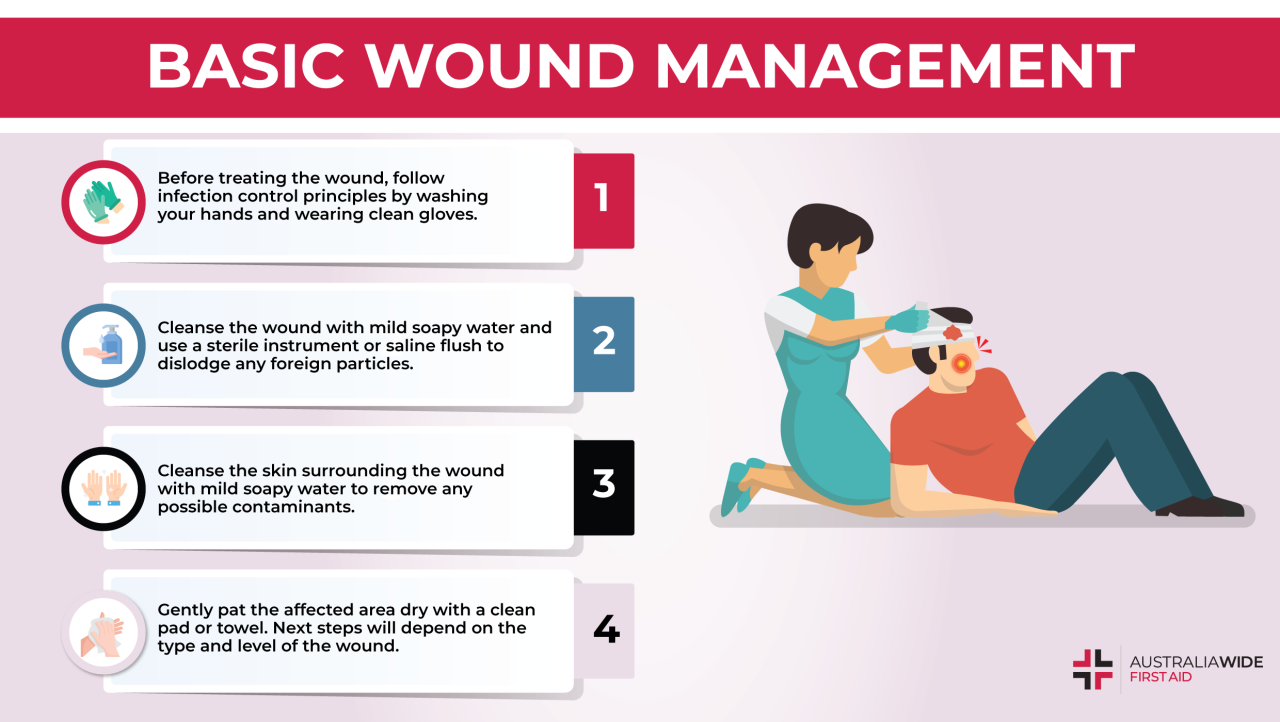Harnessing the power of focused attention is a cornerstone of personal well-being. This comprehensive guide explores the effective use of meditation timers, a practical tool to enhance focus and mindfulness. We’ll delve into various types of timers, explore optimal settings, and discover strategies to overcome common challenges in maintaining focus during meditation.
From understanding the mechanics of different timers to adapting techniques for diverse meditation styles, this guide will equip you with the knowledge and tools to integrate meditation timers seamlessly into your daily routine. We’ll also address advanced techniques for maximizing the benefits of this valuable tool.
Understanding Meditation Timers
Meditation timers are indispensable tools for maintaining focus and structure during meditation sessions. They provide a clear signal for the start and end of different stages, preventing distractions and encouraging consistent practice. A well-chosen timer can significantly enhance the effectiveness and enjoyment of your meditation routine.Meditation timers function by providing a precisely measured duration for each stage of a meditation session.
They employ various mechanisms to signal the passage of time, enabling practitioners to track their progress and stay on schedule. This structured approach helps cultivate mindfulness and focus, crucial components of a successful meditation practice.
Types of Meditation Timers
A variety of timer types are available, each with unique characteristics. Understanding these differences allows you to select a timer that best suits your individual preferences and needs. From traditional sand timers to sophisticated digital applications, the choice is vast and tailored to diverse needs.
- Digital Timers: These timers utilize electronic components to display the elapsed time and often offer features like adjustable intervals, alarms, and multiple session settings. Digital timers are highly versatile, enabling customization to match specific meditation practices.
- Sand Timers (Hourglasses): These traditional timers rely on the gradual flow of sand to measure time. They are visually appealing and provide a meditative experience in themselves. While lacking advanced features, their simplicity and analog nature can promote a sense of calm and connection with the present moment. They are ideal for beginners and those seeking a more mindful approach to time.
- App-Based Timers: Mobile applications offer a vast array of features, from simple timers to integrated meditation tracks and guided practices. These timers provide an accessible and customizable experience, combining meditation with modern technology. They often include progress tracking and other tools to enhance the user’s experience.
Timer Features and Settings
Different meditation timers offer a range of features to cater to various preferences and needs. These features often include adjustable time intervals, customizable alarm tones, and the ability to set multiple sessions. Consider these features when choosing a timer.
- Adjustable Time Intervals: Many timers allow users to specify the duration for different meditation stages. This feature is essential for structured meditation sessions.
- Customizable Alarm Tones: The option to select different tones or sounds for alarms can be beneficial. Some people find certain sounds more calming or motivating than others.
- Multiple Session Settings: Some timers enable the creation of multiple sessions with different durations. This is particularly helpful for those who practice various meditation techniques requiring different lengths of time.
Choosing the Right Timer
Selecting a timer that aligns with your individual needs and preferences is crucial for a fulfilling meditation experience. Consider factors such as your budget, desired features, and personal preferences. Different individuals may prioritize different aspects of a timer.
| Type | Features | Pros/Cons |
|---|---|---|
| Digital Timers | Adjustable intervals, multiple alarms, progress tracking, customizable sounds. | Pros: Versatile, precise, and customizable. Cons: May be more expensive than simpler timers. |
| Sand Timers | Simple, visually engaging, promotes mindfulness. | Pros: Analog, calming, and mindful. Cons: Less precise than digital timers, no advanced features. |
| App-Based Timers | Integrated meditation tracks, guided practices, progress tracking, often available for free. | Pros: Convenient, comprehensive features, often free or low-cost. Cons: Requires access to a device, potential for distractions. |
Setting Up a Timer for Focused Meditation

Establishing a consistent meditation practice relies heavily on the effective use of a timer. A timer serves as a reliable guide, ensuring that each session adheres to a specific duration. This structured approach fosters a deeper connection with the present moment and cultivates a sense of discipline and focus. Understanding how to utilize different timer types and set durations effectively is crucial for optimizing the benefits of meditation.Effective use of a timer is integral to a consistent meditation practice.
A structured duration allows the mind to fully immerse itself in the meditative state, avoiding distractions and facilitating deeper relaxation. The consistent timing also fosters a sense of routine, making meditation an integral part of one’s daily life. This predictability fosters a deeper sense of calm and control over one’s mental state.
Setting Meditation Duration on Different Timer Types
Various timer types offer different functionalities. Digital timers, often found on smartphones or computers, typically feature clear digital displays and customizable settings. Analog timers, such as sand timers or egg timers, offer a more tactile and visually engaging experience. Regardless of the type, the process of setting the desired duration remains largely the same. The crucial element is accurately setting the desired time.
Significance of Consistent Timing in Meditation
Consistent timing in meditation practice plays a vital role in cultivating focus and establishing a routine. This structure helps the mind and body adjust to the meditative state, enabling a more profound connection with the present moment. A predictable schedule reduces mental distractions, allowing practitioners to achieve a deeper level of relaxation and awareness. Consistent timing also facilitates tracking progress and identifying areas for improvement in the meditation practice.
Step-by-Step Guide for Beginners
Setting up a meditation timer for a beginner is straightforward. First, select a timer that is convenient and easily accessible. Digital timers on smartphones or computers are commonly used due to their user-friendly interface. Next, determine the desired duration for your meditation session. A good starting point for beginners is 5-10 minutes.
Once the desired duration is set, initiate the timer. Finally, remain focused on the meditation practice until the timer signals completion.
Comparing Benefits of Different Timer Durations
The duration of a meditation session can significantly influence its benefits. A 5-minute meditation session is ideal for beginners, providing a gentle introduction to the practice and fostering a sense of calm. A 10-minute session allows for a more in-depth exploration of the meditative state, enabling deeper relaxation and focus. A 20-minute session can lead to significant stress reduction and improved concentration.
The optimal duration varies based on individual needs and preferences.
Setting Up a Recurring Meditation Timer
Many modern timers, particularly those on smartphones or computers, allow for the creation of recurring meditation sessions. This feature can be used to schedule meditation sessions at specific times daily, weekly, or monthly. This recurring feature fosters a sense of routine and commitment to the practice, ensuring that meditation becomes an integral part of one’s daily schedule. The specific process for setting recurring timers varies depending on the timer’s software or interface.
Instructions for the most common platforms are often readily available online or within the timer’s settings.
Utilizing the Timer for Maintaining Focus

A crucial aspect of successful meditation is the ability to maintain focus throughout the session. A meditation timer serves as a valuable tool in this process, acting as a guide and a gentle reminder to stay present. By understanding how to utilize the timer effectively, practitioners can navigate distractions and cultivate a deeper connection with their inner self.Understanding the timer’s role in maintaining focus is essential for effective meditation.
The timer’s rhythmic progression provides a structure that helps practitioners anchor themselves in the present moment. This structure can be particularly helpful in managing the tendency to get caught up in thoughts and distractions, encouraging a return to the breath or chosen focus. A well-structured practice can aid in developing mental discipline and consistency.
Strategies for Staying Present
Staying present during meditation requires active engagement. Practitioners can utilize the timer as a tool to remind themselves to return to the breath or chosen focus whenever their mind wanders. Regularly checking in with the timer helps to reinforce the idea of focused practice. A simple, yet effective technique is to use the timer as a “return to center” signal, allowing for a gradual return to the meditation practice whenever the mind starts to drift.
Managing Distractions with the Timer
Distractions are inevitable during meditation. The timer provides a structured framework for addressing these distractions. When a distraction arises, practitioners can gently acknowledge it without judgment, and then redirect their focus back to the breath or chosen object of meditation. The timer acts as a signal to refocus and return to the present moment. This process strengthens the ability to maintain focus over time.
Techniques for Staying Focused
Several techniques can be employed to enhance focus during meditation using the timer. One approach is to set shorter meditation sessions initially, gradually increasing the duration as focus improves. This gradual approach builds mental resilience. Another technique involves using the timer as a guide to establish a consistent practice schedule. Consistency reinforces discipline and helps the mind adapt to the meditation practice.
Common Distractions and Overcoming Them
| Distraction | Strategies using the Timer |
|---|---|
| Noisy Environment | Choose a quiet space or use earplugs. Set a timer for a specific meditation period, and if distractions occur, use the timer as a signal to return to focus. |
| Physical Discomfort | Adjust posture or find a comfortable position. Use the timer as a signal to acknowledge the discomfort and gently return to the focus. |
| Mental Chatter | Acknowledge thoughts without judgment. Use the timer as a reminder to return to the breath or chosen focus. |
| External Stimuli | Minimize external stimuli. If possible, use the timer to allocate specific time for meditation when distractions are minimized. |
Building Discipline and Consistency
Using a timer can greatly aid in building discipline and consistency in meditation practice. The scheduled intervals provided by the timer create a routine, which is fundamental to developing a habit. Regularity helps the mind adapt to the meditation practice and reinforces the benefits. The timer serves as a constant reminder, helping to cultivate a sense of structure and routine, which are essential for consistent practice.
Practitioners can track their progress over time using the timer to observe patterns and areas for improvement.
Adapting to Different Meditation Styles

Meditation encompasses various practices, each with unique characteristics and goals. Understanding how different meditation styles utilize timers is crucial for maximizing their effectiveness. This section explores the diverse needs of different meditation approaches and provides guidance on tailoring timer settings for optimal results.Different meditation styles demand varied approaches to timer utilization. Mindfulness, loving-kindness, and walking meditations, for example, each have distinct requirements concerning the length and structure of the meditation session.
Mindfulness Meditation
Mindfulness meditation, a cornerstone of many meditation practices, emphasizes present-moment awareness. Timer settings for mindfulness often range from 5 to 20 minutes, depending on the practitioner’s experience and goals. A shorter session can be highly beneficial for beginners, fostering a gentle introduction to the practice. Longer sessions allow for deeper exploration of present-moment awareness and potential emotional regulation.
Important considerations include establishing a comfortable and quiet environment conducive to focused attention.
Loving-Kindness Meditation
Loving-kindness meditation cultivates feelings of compassion and goodwill toward oneself and others. Timer settings for loving-kindness meditation often align with mindfulness, typically ranging from 10 to 30 minutes. The extended duration allows for a deeper exploration of feelings and fosters a more expansive sense of interconnectedness. Key considerations include focusing on sending loving-kindness to oneself and others, and recognizing the gradual development of these feelings.
Walking Meditation
Walking meditation integrates mindful movement with present-moment awareness. Timer settings for walking meditation often depend on the chosen pace and environment. A shorter session (e.g., 5-10 minutes) can be effective for initial practice, while longer durations (e.g., 15-20 minutes) can provide a more substantial experience. Important considerations include choosing a safe and accessible walking path and maintaining a steady pace while remaining aware of body sensations and surroundings.
Table of Meditation Styles, Timer Settings, and Considerations
| Meditation Style | Suitable Timer Settings (minutes) | Key Considerations |
|---|---|---|
| Mindfulness | 5-20 | Quiet environment, focus on present moment |
| Loving-Kindness | 10-30 | Compassion, goodwill towards self and others |
| Walking | 5-20 (depending on pace and environment) | Safe walking path, awareness of body and surroundings |
Adjusting Timer Settings for Different Durations
Adjusting timer settings for varying meditation durations is straightforward. Beginners may start with shorter sessions, gradually increasing the duration as their practice evolves. For example, a 5-minute session can be a suitable starting point for mindfulness meditation. Experienced practitioners may find extended sessions of 20 minutes or more beneficial. The key is to listen to your body and adjust the duration according to your needs and comfort level.
Overcoming Challenges with the Timer
Using a meditation timer can be a powerful tool for focusing, but it can also present challenges. Understanding these common hurdles and developing strategies to address them is crucial for maintaining consistent and effective meditation practice. This section explores common obstacles and provides practical solutions for navigating them.
Common Challenges During Meditation
Difficulties encountered while using a meditation timer often stem from internal factors such as restlessness, boredom, or losing track of time. External distractions can also disrupt focus. Addressing these challenges proactively can significantly enhance the meditative experience.
- Restlessness and Physical Discomfort: Physical discomfort, such as an itching sensation or a fidgety body, can disrupt focus. Addressing these issues requires recognizing their presence and employing strategies to manage them without judgment. Deep breaths, gentle stretches, or shifting posture can help alleviate these physical sensations and bring awareness back to the present moment. For example, a gentle stretch of the arms or legs, or adjusting the position of the body, can help release tension and promote a more comfortable state of being during meditation.
- Boredom and Lack of Engagement: Sustaining focus during extended meditation sessions can be challenging, leading to boredom and a drifting mind. To counter this, one can adjust the meditation style, exploring different techniques like walking meditation, mindful movement, or guided meditations to maintain engagement. Alternatively, focusing on a specific object, sound, or mantra can help anchor attention and prevent mental wandering.
For instance, focusing on the sensation of each breath, or repeating a mantra mentally or aloud, can help to redirect thoughts and keep the mind engaged during the meditation session.
- Losing Track of Time: When deeply engrossed in meditation, it’s easy to lose track of time. This can lead to anxiety or frustration, especially if one is striving for a particular duration. Using visual cues like a sand timer, a digital timer with visual indicators, or a clock visible in the meditation space can help to maintain awareness of time.
A structured meditation schedule, adhering to a consistent routine, can also enhance the awareness of time during the session. For example, setting a visual timer with a large digital display can serve as a reminder of the meditation duration.
Addressing Anxiety and Frustration
Anxiety or frustration arising from using a timer can often stem from unrealistic expectations or a lack of understanding about the meditation process. It is important to approach meditation with a non-judgmental attitude and a focus on the present moment. These strategies can help mitigate such feelings:
- Acceptance of Imperfection: Meditation is a journey, not a destination. Acknowledge that the mind will wander, and that’s perfectly normal. Accepting this aspect of the process helps to avoid frustration when the mind wanders during the session.
- Non-Judgmental Awareness: Observe thoughts and feelings without judgment. Recognizing them as passing events helps prevent becoming entangled in them. This non-judgmental awareness is a core component of meditation practice.
- Gradual Adjustments: Start with shorter meditation sessions and gradually increase the duration as comfort and focus improve. This gradual approach helps build a positive association with meditation and reduces the pressure to achieve perfection immediately.
Modifying Timer Settings
Adapting timer settings to individual needs can significantly enhance the meditation experience. Consider these factors when adjusting the timer:
- Session Duration: Begin with shorter sessions and gradually increase the duration as focus improves. A 5-minute session can be a good starting point.
- Breaks: Short breaks between meditation sessions can aid in maintaining focus during longer periods. A 2-minute break after each 10-minute session can help maintain energy and concentration.
- Sound Cues: Choose gentle sound cues or silent timers to minimize distractions.
Preventing External Distractions
Minimizing external factors can significantly contribute to a more focused meditation experience. These strategies can help:
- Minimizing External Noise: Find a quiet space free from distracting sounds. Using earplugs or white noise can further reduce disturbances.
- Creating a Conducive Environment: A comfortable and organized space can promote relaxation and focus. Keeping the area tidy and clutter-free can create a more conducive environment for meditation.
- Setting Boundaries: Communicate with household members or roommates about the need for quiet during meditation sessions.
Integrating Meditation Timers into Daily Routine
Integrating a meditation practice into a busy daily schedule requires careful planning and consideration. A well-structured approach, using a timer effectively, can make meditation a sustainable and enriching part of your routine. This section explores strategies for incorporating meditation into your day, including a template for a daily routine, the importance of realistic goals, and how to integrate timers with other productivity tools.Understanding that consistency is key, we can approach integrating meditation timers into daily life as a gradual process.
This section will guide you in tailoring your meditation practice to fit your unique schedule and personal preferences. By implementing these strategies, you can discover the benefits of mindfulness and focus in a practical and manageable way.
Strategies for Incorporating Meditation into a Busy Schedule
Successfully incorporating meditation into a busy schedule hinges on strategic planning. Identifying pockets of time, even brief ones, is crucial. Morning, midday, or before bed are common choices, but any time that allows for dedicated focus works well. Prioritizing meditation as an appointment with yourself is essential for consistency. Furthermore, understanding your energy levels throughout the day can help you choose the best time for your meditation sessions.
For example, a short, focused meditation session in the afternoon might help combat afternoon slumps.
Template for a Daily Meditation Routine
A structured routine can significantly aid in establishing a consistent meditation practice. This template offers a flexible framework, allowing adaptation to individual needs and preferences.
- Morning Meditation (5-10 minutes): Begin your day with a mindful practice to set a positive tone for the entire day. Focus on setting intentions for the day ahead and cultivating a sense of calm and clarity.
- Midday Meditation (5-10 minutes): A brief meditation session during the workday can be a valuable tool for maintaining focus and reducing stress. This is a great time to decompress from work tasks or to prepare for the rest of the day.
- Evening Meditation (10-15 minutes): Wind down from the day’s activities with a reflective meditation session. This can help to clear your mind and prepare for a restful night’s sleep. Consider incorporating gratitude practices into this session.
Importance of Realistic Goals
Setting realistic goals for meditation is crucial for maintaining motivation and avoiding burnout. Begin with shorter sessions and gradually increase the duration as you develop a consistent practice. For instance, starting with 5-minute sessions and progressively increasing the duration to 10, 15, and 20 minutes over a few weeks can be a sustainable approach. This allows for gradual adaptation and prevents the feeling of being overwhelmed.
Incorporating Different Timer Settings
Using different timer settings for various tasks throughout the day can maximize productivity and focus. For example, a timer set for 25 minutes can be used for focused work sessions (Pomodoro Technique), while a shorter timer might be used for brief mindfulness breaks. A timer set for 10 minutes can be used for a short mindful walking meditation.
Integrating Timers with Productivity Tools
Integrating meditation timers with productivity tools can streamline your workflow. Many productivity apps, such as those that implement the Pomodoro Technique, now include meditation timer functionalities. Combining focused work periods with short meditation breaks can create a more balanced and efficient work rhythm. Utilizing timer functions on calendars or task management apps can create a daily schedule and remind you of your meditation sessions.
Advanced Timer Techniques for Enhanced Focus

Leveraging a meditation timer effectively extends beyond basic use. Advanced techniques allow for a more nuanced and personalized approach to cultivating focus and well-being. These strategies build upon the foundation of consistent practice, enabling users to deepen their meditative experience and integrate it seamlessly into their daily lives.
Building a Routine with Timers
Establishing a consistent meditation schedule is crucial for reaping the benefits of mindfulness. Timers provide a structured framework for building a routine, which fosters a sense of discipline and predictability. This routine helps regulate the mind and body, promoting a state of calm and focus throughout the day. The predictability of a consistent schedule aids in the integration of meditation into daily life.
For example, a 15-minute meditation session in the morning can set a positive tone for the entire day.
Adjusting Meditation Duration
Individual needs and progress dictate the ideal meditation duration. Starting with shorter sessions and gradually increasing the duration over time is a beneficial approach. This gradual increase allows the mind and body to adjust to the practice, preventing burnout and promoting sustainable habits. For example, a beginner might start with 5-minute sessions, progressing to 10, 15, and eventually 20 minutes as their focus improves.
Guided Meditation and Timers
Many guided meditations incorporate timer features to provide structure and cues for various stages of the practice. Timers in guided meditations can signal transitions between different meditation techniques, allowing for a seamless experience and a more effective approach. For instance, a guided meditation might use the timer to indicate when to shift from focusing on breath to visualizing a calming scene.
Improving Mental Well-being
Timers can be a powerful tool for enhancing mental well-being by creating a structured and mindful approach to daily activities. By incorporating timers into daily tasks, one can foster a greater sense of awareness and control over one’s thoughts and emotions. This, in turn, can lead to reduced stress, improved emotional regulation, and enhanced overall well-being. For example, using a timer to dedicate specific blocks of time to journaling or engaging in hobbies can cultivate a more mindful and fulfilling lifestyle.
Closure

In conclusion, mastering the use of a meditation timer is a journey towards cultivating focus and enhancing overall well-being. By understanding timer types, setting up consistent routines, and adapting to different meditation styles, you can unlock the full potential of this valuable tool. This guide provides a roadmap for overcoming common challenges and integrating meditation into your daily life.
Ultimately, using a timer in meditation is about finding the rhythm that works best for you.